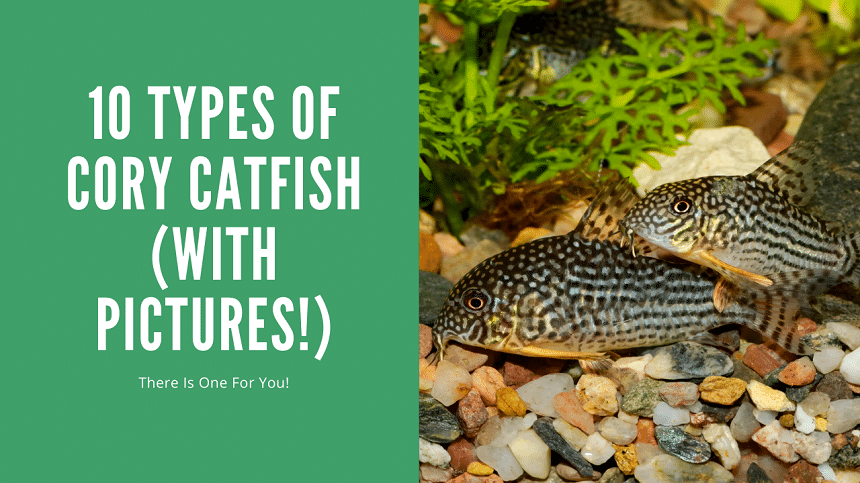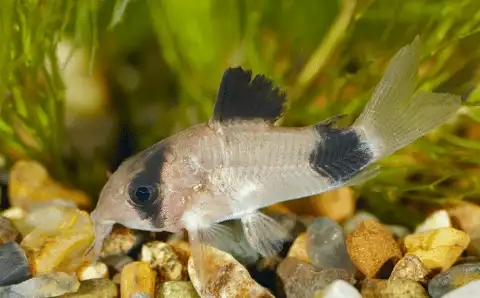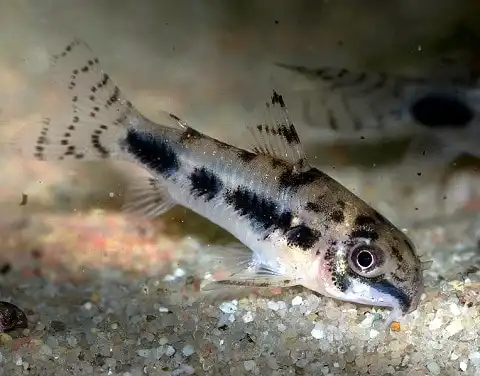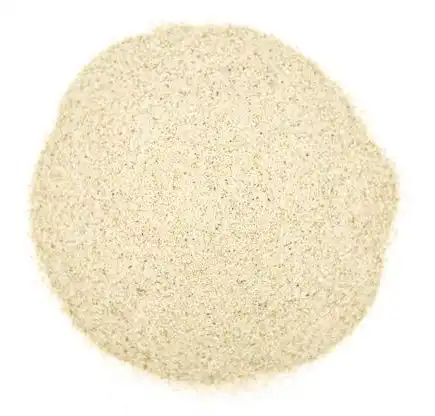Thank you for visiting! By the way… any links on this page that lead to products on Amazon and other stores/partners are affiliate links Aquarium Store Depot earns a commission if you make a purchase.
Corydoras catfish are some of the most popular community fish in the freshwater aquarium hobby. If you’ve never kept a school of these neat little bottom dwellers, I would definitely recommend trying them out!
In this article, I’ll introduce 10 of the most popular common cory catfish types that are loved by fish keepers all over the world. I’ll also teach you how to set up your tank and care for the different types of cory catfish, so let’s dive right in!
What Are Cory Catfish?
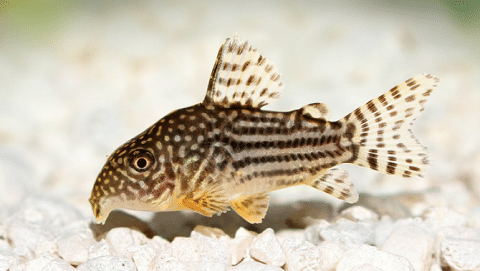
Cory catfish are small freshwater fish from the Corydoras genus. These shoaling fish are native to South America where an amazing 160+ species are known- with many more probably waiting to be described. They range in size from an inch or so to over 4 inches in length and are solidly built with armor-like scales.
Cory cats aren’t very colorful, but they are very entertaining to watch as they forage around in the tank, periodically shooting up to the surface to take a breath of air. They love to hang out in groups and should always be kept in schools in the aquarium.
Interestingly, the first ray of their pectoral fins forms a strong, sharp spine that may be tipped in toxic venom. This is probably an adaptation to make predators think twice about eating them. They are not aggressive at all, but it is best to not handle these fish with bare hands.
10 Best Cory Catfish Types
Now that you know a little more about these fish, it’s time to jump right in and get to know the 10 most popular types of cory catfish that you can keep. For each corydoras fish species, I’ll be providing the most important stats that you need to know, like:
- Scientific Name
- Difficulty Level
- Temperament
- Adult Size
- Minimum Tank Size
- Diet
- Origin
- Temperature
- pH
- Difficulty to breed
- Planted tank suitability
We have a video below from our YouTube channel. We go into more blog detail below. If you like our video, be sure to subscribe as we post videos every week!
So let’s get started!
1. Pygmy
A smaller variety of Cory Catfish. Grows to less than 1.5 inches in length. A peaceful bottom dwelling fish
- Scientific Name: Corydoras pygmaeus
- Difficulty Level: Easy
- Temperament: Peaceful
- Adult Size: 1.2 inches
- Minimum Tank Size: 10 gallons
- Diet: Feed frozen, live, and dried foods
- Origin: Brazil
- Temperature: 72-79°F
- pH: 6.4-7.4
- Difficulty to breed: Moderate
- Planted tank suitability: Yes
The pygmy cory is the perfect species for nano aquariums. These silvery schoolers have a prominent black line along their sides, from their eyes to their tails. Pygmy cories are extremely peaceful, and even a little shy around bigger, more boisterous fish.
Keep them with other small fish species to bring out the best in them. A group of at least 5 or more will look great and allow them to show their natural schooling behavior.
2. Longfin Panda
- Scientific Name: Corydoras panda
- Difficulty Level: Easy
- Temperament: Peaceful
- Adult Size: 2.5 inches
- Minimum Tank Size: 10 – 20 gallons
- Diet: Feed frozen, live, and dried foods
- Origin: Peru
- Temperature: 72-77°F
- pH: 6-7.4
- Difficulty to breed: Moderate
- Planted tank suitability: Yes
The longfin (video source) is a great variety of the regular panda cory. These schooling fish are an awesome choice for community aquariums.
The long and flowing caudal fin definitely adds to their appeal. Panda corydoras are very social and peaceful fish that love to hang out in a group, so be sure to order at least 5 of them to really enjoy their natural behavior.
3. Albino Aeneus
A unique Cory Catfish that grows to 2.3 inches in size. Best in groups of 3 or more
- Scientific Name: Corydoras aeneus
- Difficulty Level: Easy
- Temperament: Peaceful
- Adult Size: 2.5-3 inches
- Minimum Tank Size: 20 gallons
- Diet: Feed frozen, live, and dried foods
- Origin: South America
- Temperature: 70-81°F
- pH: 6-8
- Difficulty to breed: Moderate
- Planted tank suitability: Yes
These albino corydoras catfish are a pure white version of the bronze cory catfish (Corydoras aeneus). Their pinkish-white coloration makes them really stand out, especially with good lighting and a dark background and substrate.
Albino bronze corys are solidly built little cory catfish that get a little larger than most other types of corydoras. They are a great choice for a peaceful community setup with other similarly sized tropical fish.
4. Panda Corydoras
A small cory fish that does well in shrimp tanks. Grows to 2.5 inches in length
- Scientific Name: Corydoras panda
- Difficulty Level: Easy
- Temperament: Peaceful
- Adult Size: 2.5 inches
- Minimum Tank Size: 10-20 gallons
- Diet: Feed frozen, live, and dried foods
- Origin: Peru
- Temperature: 72-77°F
- pH: 6-7.4
- Difficulty to breed: Moderate
- Planted tank suitability: Yes
The panda cory is one of the most popular species in the hobby. These schooling fish are very recognizable with the black markings on their face, tail, and dorsal fin.
Panda cories bred in the aquarium trade are adapted to water temperatures in the mid-70s, but in the wild, they can survive in cooler water temperatures down to the upper 60s (Fahrenheit).
5. Habrosus
A small and active cory catfish. Does best in groups of at least 5
- Scientific Name: Corydoras habrosus
- Difficulty Level: Easy
- Temperament: Peaceful
- Adult Size: 1.5 inches
- Minimum Tank Size: 15 gallons
- Diet: Feed frozen, live, and dried foods
- Origin: Venezuela & Colombia
- Temperature: 70-79°F
- pH: 5.5-7.5
- Difficulty to breed: Moderate
- Planted tank suitability: Yes
The habrosus cory is commonly known as the salt and pepper cory. This nano fish species is very similar to the pygmy corydoras but tends to be a little more boldly marked. Another good way to tell them apart is to look at the dark line down their sides – in this species, the line is broken.
Like Corydoras pygmaeus, these schooling cories are active swimmers that spend most of their time in the midwater of the aquarium. I suggest keeping at least 5 of these nano schoolers, but go for 10 or more if you have the room!
6. Paleatus
Also known as the Peppered or Salt and Pepper Cory. Grow up to 2.5 inches in length. Look great in light substrates
- Scientific Name: Corydoras paleatus
- Difficulty Level: Easy
- Temperament: Peaceful
- Adult Size: 2.5 inches
- Minimum Tank Size: 15 gallons
- Diet: Feed frozen, live, and dried foods
- Origin: Brazil, Argentina, Paraguay, Uruguay
- Temperature: 72-78°F
- pH: 6-7
- Difficulty to breed: Moderate
- Planted tank suitability: Yes
The paleatus, or pepper cory catfish, is a great species of cory for beginners. These affordable fish are commonly known as the peppered corydoras because of their finely blotched pattern.
Peppered cory catfish should be kept in a small group to bring out the best in their personalities.
7. Sterba’s

- Scientific Name: Corydoras sterbai
- Difficulty Level: Easy
- Temperament: Peaceful
- Adult Size: 2.5 inches
- Minimum Tank Size: 15 gallons
- Diet: Feed frozen, live, and dried foods
- Origin: Bolivia & Brazil
- Temperature: 70-77° F
- pH: 6.2-7.8
- Difficulty to breed: Moderate
- Planted tank suitability: Yes
The Sterba’s cory is one of my favorite corydoras of all. These stunning little cory catfish are very peaceful and look amazing in a tropical community aquarium.
Sterba’s cory is a pretty dark species, that is heavily marked with black lines and silver dots. Their most distinctive feature is probably the golden yellow color of their pectoral and pelvic fins.
8. Simillis Corydoras
- Scientific Name: Corydoras similis
- Difficulty Level: Easy
- Temperament: Peaceful
- Adult Size: 2 inches
- Minimum Tank Size: 20 gallons
- Diet: Feed frozen, live, and dried foods
- Origin: Brazil
- Temperature: 72-79°F
- pH: 6-8
- Difficulty to breed: Moderate
- Planted tank suitability: Yes
The similis cory (video source) is one of the best-looking species out there. They have a finely spotted body, with a darker area near the tail.
These cory catfish types are a great choice for a blackwater amazon biotope, but they will be very happy in a regular planted setup too.
9. Adolfo Cory-Cat
- Scientific Name: Corydoras aldolfoi
- Difficulty Level: Easy
- Temperament: Peaceful
- Adult Size: 2.5 inches
- Minimum Tank Size: 30 gallons
- Diet: Feed frozen, live, and dried foods
- Origin: Brazil
- Temperature: 72-79°F
- pH: 5.8-7
- Difficulty to breed: Moderate
- Planted tank suitability: Yes
Corydoras catfish (video source) are not really known for bright colors, but the adolfo cory is certainly one of the bolder species! These fish are silvery-white with black markings and have a distinctive orange mark on their backs. They are most at home in acidic stained water.
10. False Julii-Cory

- Scientific Name: Corydoras trilineatus
- Difficulty Level: Easy
- Temperament: Peaceful
- Adult Size: 2 inches
- Minimum Tank Size: 30 gallons
- Diet: Feed frozen, live, and dried foods
- Origin: Brazil, Colombia, Peru, Suriname
- Temperature: 72-79°F
- pH: 5.8-7
- Difficulty to breed: Moderate
- Planted tank suitability: Yes
The false julii cory catfish gets its name because it looks a lot like the regular julii corydoras catfish (Corydoras julii). They are striking little fish with silvery bodies covered in interesting plack patterns.
They are an active species that will entertain you with plenty of antics if kept in a nice school of at least 6.
Other Species
There are a huge number of different corydoras species. In fact, with more than 160 types of cory catfish, they form the largest genus of freshwater fish in the world!
Here’s a list of other common corydoras you might come across in pet stores and the aquarium trade.
- Julii cory – Corydoras julii
- Bandit cory – Corydoras metae
- Three stripe cory – Corydoras trilineatus
- Leopard cory – Corydoras leopardus
- Skunk cory – Corydoras arcuatus
- Dwarf corydoras – Corydoras hastatus
- Orange laser cory – Corydoras aeneus
- Agassizi cory – Corydoras agassizi
Tank Setup
Setting up a great tank for cory catfish is easy. The nano species like pygmy corydoras can thrive in tanks as small as 10 gallons, but many of the larger species will do much better in community tanks of at least 30 gallons or so. As with all aquarium fish, the bigger the tank the better!
Let’s take a look at how to set up your aquarium for cory catfish.
Substrate & Decorations
Choosing the right substrate is more important for keeping cories than you might think! These cory catfish have fine whisker-like structures around their mouths that are known as barbels. These barbels are used to forage for food in the substrate, but they can be easily damaged on sharp gravel.
This is known as barbel erosion and its causes are not universally agreed on. Fine sand is the best substrate choice because this is what the fish are able to dig through without hurting themselves.
Natural sand is excellent for bottom feeder fish to forage around in.
A layer of just half an inch or less is ideal because it will allow the fish to search right down to the bottom of the tank and consume any uneaten food.
Live Plants
Growing some floating plants and epiphytes in the tank can enhance the look of your aquarium while improving water quality and oxygenation. The following species are easy to grow and don’t need any special lighting or equipment:
- Java Moss
- Java Fern
- Anubias nana
- Red root floater
Lighting & Filtration
Most types of cory catfish prefer low lighting, but they will also be very happy in a well-lit planted tank, especially if the plants provide some shade. They will also enjoy some hides and caves in the form of ornaments or carefully arranged hardscapes.
Cory catfish need great water quality, so a good quality water filtration system is essential. Many breeders make use of simple sponge filters, but a canister, hang-on back, or internal power filter could be a more aesthetically pleasing option for a beautiful display tank.
Any filter you select should provide excellent mechanical and biological filtration. Choose a model that matches your aquarium tank size and is able to process the volume of water about 5 times every hour.
How To Take Care Of Your Pet
Cory catfish are simple to care for, which is one of the reasons they are so popular in the fish-keeping hobby. With the right tank setup, good maintenance, and a high-quality diet, these fish can provide you with years of enjoyment in a tropical community tank.
Read on to learn more about caring for these fun little bottom feeders!
Aquarium Maintenance
Regular aquarium maintenance is especially important when keeping cory catfish. These fish do not tolerate poor water quality well and can be affected by serious conditions like barbel erosion in a neglected tank.
Stay on top of your maintenance by performing a simple water change each week. Make sure to clean the substrate thoroughly with your gravel vacuum, because this is where your cory catfish forage and hang out.
You’ll need an aquarium test kit to monitor the water parameters in your tank. The test results should always read zero parts ammonia and nitrites in a fully cycled aquarium. Nitrates will build up naturally in any stocked aquarium but should be kept to below 20 parts per million.
Behavior & Feeding
Most cory catfish are bottom dwellers that spend their time digging through the substrate or resting on the sand. They can be very active too and often enjoy swimming up and down the tank at high speed. They are very social creatures and just love shoaling together.
The nano species like habrosas and pygmy corys are a little different. They are more active swimmers and tend to spend their time schooling in the midwater levels of the tank.
Cory catfish are omnivorous and will eat just about any food source you provide. Unfortunately, some inexperienced fishkeepers make the mistake of not feeding them at all. While they do make an awesome part of the clean-up crew, this doesn’t mean they don’t need a high-quality diet.
Let’s take a look at some of the best food sources for these fish.
- Flake foods and granules
- Sinking pellets and wafers
- Gel foods
- Frozen foods
- Live baby brine shrimp
- Black worms
Breeding
Cory catfish can be bred at home with a little planning and preparation. You’ll need a separate breeding tank of about ten gallons or so with a simple sponge filter for the best results. You should put in a spawning mop of synthetic wool or a live plant like java moss where the females can deposit their eggs.
A group of 2 females and four males is a good bet and they should be well-conditioned after moving them into the breeding tank. The males tend to be a little smaller than the females and have more pointed fins. Feeding them a high-quality diet including plenty of live/frozen food will get the fish ready to spawn.
Frequent water changes are necessary and replacing the old water with slightly cooler water will often trigger spawning. The spawning behavior is interesting to watch, with the pair forming a T-shape. The eggs are laid on the spawning mop or even just the aquarium glass.
Remove the adults once eggs have been laid. They should hatch after about 5 days and will need to be fed a diet of micro worms once they reach the free-swimming stage.
Tankmates
All types of cory catfish are the perfect fish for community tanks because they are just so peaceful. Most species can be kept with adult shrimp, but you can expect juvenile shrimp to be snacked on.
Cory catfish should only be kept with other small fish that won’t bully them, or try to eat them. They can be kept with other bottom-dwelling species, but take care not to overstock your tank with bottom-feeders. Let’s take a look at some other fish that can be kept with corydoras:
- Cardinal tetras
- Angelfish
- Otocinclus catfish
- Danios
- Apistogramma and rams
- Livebearers like guppies
- Other corydoras catfish
- Betta fish
Where To Buy
Corydoras are such popular fish that you can find them at most pet shops and aquarium stores. There are some great online retailers like Flipaquatics that have made a name for themselves by selling high-quality stock and making the delivery process super easy and safe for the fish too.
FAQs
How many species are there?
According to some reputable sources like FishBase, there are at least 166 types of cory catfish in the wild. There are probably many more species too that are not yet known to science!
How many species of Corydoras are there?
According to some reputable sources like FishBase, there are at least 166 types of cory catfish in the wild. There are probably many more species too that are not yet known to science!
How many Corydoras should be kept together?
Corydoras catfish are social fish that love to hang out in groups. In nature they can often be found in huge shoals, so the more you can keep without overstocking your tank, the better.
Is 4 of these enough?
Ideally, you should keep at least 6 cory catfish of the same species together. They will survive just fine in a group of 4 but you might not see them performing all their natural behaviors. They are a natural schooling species.
What is the biggest size?
The banded cory (Scleromystax barbatus) is the largest of all the cory catfish types. They might not be a true corydoras species, but they used to be considered a member of the same genus. These beautiful fish can grow to 4 inches in length and have awesome markings.
Are they good for beginners?
Cory catfish are great fish for beginners. They are reasonably priced, easy to find at most pet stores and work great as a community fish in many modern aquariums.
Final Thoughts
Cory catfish are amazing pets for tropical freshwater aquariums. They stay small, are sweet-natured, and help to clean up uneaten food from their messy tank mates! Choosing the perfect species can be tough with all the options, but the ten fish in this list are all worth considering for your aquarium.
What are your favorite types of cory catfish? Let me know in the comments below!
- About the Author
- Latest Posts
I’m thrilled that you found Aquarium Store Depot! Here you’ll find information on fish, aquariums, and all things aquatics related. I’m a hobbyist (being doing this since I was 11) and here to help other hobbyists thrive with their aquariums! I adhere to a high quality Editorial Process and Review products with real life field usage and practical analysis.

